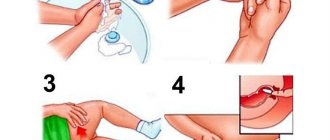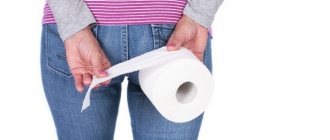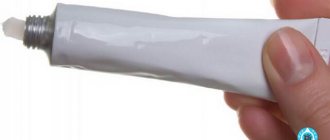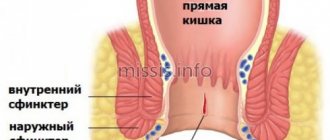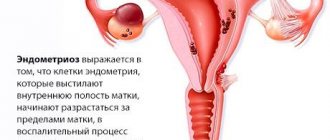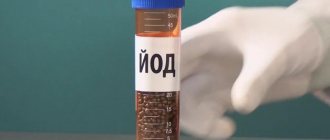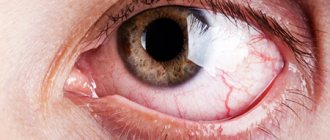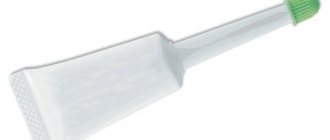Foreign bodies are objects unusual for the body that have entered its tissues or organs through lesions on the skin or natural openings.
A foreign body in the intestine may appear when swallowed or enter through the anus.
Foreign bodies in the intestines can be very diverse. These are bones from fruits, fish or chicken, seeds, toothpicks, dentures for teeth. These objects can be accidentally swallowed during conversation, laughter, sudden swallowing, coughing, while eating, in an inadequate state (during intoxication, for example) or during suicide attempts. Sometimes you may come across unsafe objects: pieces of broken glass, nails, sewing needles (seamstresses and tailors, for example, have a habit of holding needles in their mouths while working).
In children, foreign bodies appear in the intestines accidentally: a child may swallow a coin, buttons or a small part of a toy while playing. Most often, these objects are passed out unhindered in the stool after 2-3 days. However, we recommend that you consult a doctor in all such cases!
A foreign body may end up in the intestines and through the anus. For example, there are known cases of hemorrhoids being treated in very non-standard ways - with the help of a fresh cucumber introduced into the anus. Such self-medication ends with an emergency request for medical help.
In approximately every 5th or every 10th case of a foreign body entering the intestine, the help of a doctor is required. Under favorable conditions, the foreign body, having been in the intestines, safely comes out naturally during bowel movements.
In more serious cases, a foreign object in the intestine can cut the intestine with sharp edges.
It is important to understand that when a foreign body is introduced into the intestine, there is a danger of rupture of the rectal mucosa, bleeding, and painful shock. Tissue damage can subsequently lead to fistulas, sphincter incontinence, and rectal prolapse. The most dangerous scenario is intestinal perforation with inflammation in the pelvis, perforation of the intestinal wall and the development of peritonitis or an abscess isolated by adhesions. In this case, major surgery will be required.
1
Foreign body in the intestine. Treatment.
2 Foreign body in the intestine. Treatment.
3 Foreign body in the intestine. Treatment.
Under no circumstances should you try to independently remove a foreign body in the intestines with your hands, foreign objects, using laxatives or enemas. You should consult a doctor immediately!
At “MedicCity” you will receive assistance professionally, delicately, maintaining complete anonymity and using the most gentle methods possible!
Why does the sensation of a foreign body occur in the anus?
Dilatation of hemorrhoidal veins
With internal hemorrhoids, enlarged nodes are located in the rectal cavity near the sphincter and bulge into the lumen of the organ, which causes the occurrence of symptoms.
At stage 1 of the disease, there is no sign due to the small size of the nodes; the patient is bothered by itching, burning, and discomfort after bowel movement. Blood smears may appear on toilet paper. Enlargement of nodes at stage 2 is accompanied by increasing heaviness and a sensation of a foreign object. During defecation, the nodes fall out of the anus, which is manifested by increased symptoms, and then reset on their own. At stage 3, there is no independent reduction. The symptom becomes more pronounced not only because of their size and infringement, but also due to frequent trauma, concomitant inflammation, and gradual connective tissue degeneration.
Thrombosis of hemorrhoids occurs mainly in the later stages of hemorrhoids. The sensation of a foreign body is combined with constant pain, weakness, fever, hyperemia, hyperthermia, and swelling of the perianal area. The severity of manifestations correlates with the severity of concomitant inflammation.
Paraproctitis
Discomfort, pressure and the sensation of a foreign body can be the first symptoms of acute paraproctitis; they appear at the stage of abscess formation and are quickly replaced by increasing pain, general hyperthermia, severe intoxication syndrome, swelling, and redness of the anus. It is possible to melt a significant amount of tissue.
Rectal fistulas, which form during the transition of acute paraproctitis to chronic, are also accompanied by pain. Discomfort and the sensation of a foreign object are associated with the inflammatory process and the proliferation of granulations. Symptoms intensify when walking, coughing, sitting for a long time, or passing stool through the rectum. Purulent and sanguineous discharge are noted; in the presence of an external fistulous tract, a wound is found in the projection of the anus.
Sensation of a foreign body in the anus
Foreign bodies
Foreign objects enter the rectum during independent medical procedures or the introduction of various objects for the purpose of sexual gratification. Less commonly, the cause of foreign bodies in the anus is the ingestion of small objects (construction elements, small toys, buttons) and their subsequent passage through the gastrointestinal tract in young children and people suffering from mental illness.
Complaints depend on the size and configuration of the foreign body, the duration of its presence in the intestine, and the presence of complications. More pronounced symptoms are observed with a significant size and sharp edges of the object. Round objects are manifested mainly by a feeling of pressure and expansion. Bodies with pointed edges injure the intestinal wall, so patients are concerned about pain.
Inflammation causes intense pain, frequent urge to defecate, blood in the feces, and disturbances in general condition. Perforation of the intestinal wall and penetration of an object into the soft tissues of the anorectal area are characterized by sudden, sharp, unbearable pain. When the intestinal wall is perforated and the contents exit into the abdominal cavity, the clinical picture of an acute abdomen is revealed.
Volumetric formations
Small benign neoplasias are often asymptomatic. The sensation of a foreign body appears when the tumor enlarges or becomes traumatized, or when an inflammatory process occurs. Polyps are characterized by bloody or mucous discharge and a feeling of discomfort. With widespread polyposis involving not only the rectum, but also the overlying parts of the intestine, disturbances in peristalsis with the development of constipation and the appearance of symptoms of partial intestinal obstruction are possible. Pain syndrome indicates the presence of inflammation.
Villous tumors are typically characterized by copious viscous glassy discharge, resembling egg white in appearance. With large neoplasias, the volume of discharge reaches several liters during the day, which causes frequent bowel movements. Due to irritation of the skin around the anus, itching and maceration are possible. When traumatized, the mucus becomes stained with blood. Patients complain of discomfort, foreign body sensation, constipation. With large tumors, pain is possible, with low-lying tumors, tumor prolapse during bowel movement.
Rectal cancer, like benign neoplasia, is asymptomatic in the early stages, but differs from them in subsequent rapid progression. Along with the sensation of a foreign body, patients complain of diarrhea or constipation, blood in the feces, “ribbon” stools, and intestinal obstruction. Common symptoms include weakness, malaise, changes in eating habits and lack of appetite, and rapid weight loss.
Inflammatory diseases
In acute proctitis, pain prevails, intensifying at the time of defecation and weakening after its completion, and frequent false urges are observed. In the chronic form of the pathology, the pain is moderate or mild, patients report discomfort, burning, and a feeling of pressure in the anus. Initially, constipation is detected, followed by alternating constipation and episodes of diarrhea.
Cryptitis is caused by the development of inflammation in the anal sinuses. Due to swelling and accumulation of contents, there is a feeling of pressure, bloating, and a foreign body. Other symptoms are pain, heaviness, burning, and detection of blood streaks in the stool. The formation of an abscess is accompanied by a sharp increase in pain, and after the pus drains, intense itching occurs. The general condition remains satisfactory.
Anal fissure
The sensation of a foreign body is not a leading sign of pathology, but can be present in both acute and chronic anal fissure. Caused by tonic spasm as a reaction to severe pain. In some patients, it may be associated with overflow of the rectum with feces due to fear of defecation. Supplemented by scanty bloody discharge (blood smears), anal itching.
Where to go?
If you have pain in the anus, you should consult a proctologist.
Whatever the reasons for the discomfort in the anus, you should first contact a proctologist. He will examine the condition of the rectum and give his verdict. His arsenal includes various diagnostic tools: microdiagnostics, laboratory tests, and the use of special video equipment.
These tools allow you to identify pathology at an early stage and prescribe adequate treatment. The doctor will help you cope with the problem. However, the patient must come to the appointment in a timely manner with complaints, and then follow the specialist’s recommendations.
Diagnostics
A proctologist is involved in establishing the nature of the pathology. During a conversation with the patient, the specialist finds out the time and circumstances of the onset of the symptom and the presence of other manifestations. When examining the perianal area, fistulas, rashes, and areas of maceration may be detected. To make a final diagnosis, methods such as:
- Digital rectal examination.
Provides data on mass formations, foreign objects, enlarged and prolapsed hemorrhoids. To increase the information content, an additional inspection is performed in the mirrors. - Sonography.
Transrectal ultrasound of the rectum is recommended for diagnosing neoplasms and determining the prevalence of inflammatory processes. To exclude diseases of the reproductive system, women undergo an ultrasound of the pelvic organs, and men - an ultrasound of the prostate. - Endoscopic techniques
. When performing anoscopy and sigmoidoscopy, foreign bodies, fistula tracts, enlarged hemorrhoids, neoplasms, and inflammatory changes are detected. During the study, it is possible to remove foreign bodies or collect material for subsequent morphological analysis. - Anal manometry.
Sphincter tone is assessed to detect muscle spasm or confirm fecal incontinence. According to indications, the technique is supplemented with electromyography of the anus muscles. - Coprogram.
Prescribed for inflammatory processes and helminthiasis. In the first case, mucus and leukocytes are determined in the stool, in the second - worm eggs. In many pathologies, evidence of the presence of blood impurities in the stool is indicative. - Other laboratory tests
. Microbiological examination for proctitis, paraproctitis, cryptitis, and other inflammatory processes is carried out to clarify the type of pathogen and its sensitivity to antibiotics. Histological and cytological analyzes are necessary to establish the structure and degree of malignancy of neoplasia. - Other techniques
. Patients with suspected development of fecal peritonitis due to perforation of the intestinal wall by a foreign body are prescribed radiography of the abdominal cavity and diagnostic laparoscopy. If colon polyposis is suspected, colonoscopy is indicated.
Rectoscopy
Secondary causes
Diabetes can also cause a burning sensation in the anus.
A burning sensation is not always a consequence of damage to the rectum. Such symptoms may be a consequence of the presence of serious diseases in the body that are not related to the condition of the intestines. Sometimes this is how the body reacts to poor ecology and other unfavorable living conditions.
Diabetes mellitus often provokes itching in the anus or pubic area. This is due to the composition of the blood and all body fluids. Obesity, which causes excessive sweating, leads to chafing of the skin in places where there are many folds. The abrasions make themselves felt with severe pain and burning. Such symptoms are observed not only in the area between the legs, but also under the armpits, near the chin.
An allergic reaction can occur in any part of the body. Itching in the anus may well be one of the manifestations of the body's reaction to irritating factors. Of course, these could be products. But most often, contact dermatitis manifests itself this way when a person cannot tolerate washing powders or certain types of detergents. Also, allergies to medications cause itching in this area.
Treatment
Conservative therapy
The conservative treatment program includes a special diet, medicinal and non-medicinal techniques. Patients are advised to limit the amount of spicy, salty, and fatty foods in their diet. As part of drug therapy, the following are prescribed:
- Local remedies
. Suppositories reduce the severity of inflammation, reduce discomfort, burning, itching, help facilitate the act of defecation, thereby preventing the worsening of the pathology and the development of complications. - Antibiotics
. Indicated for proctitis, cryptitis, acute paraproctitis, rectal fistulas during exacerbation. At the initial stage, broad-spectrum drugs are used; after receiving the culture results, the drug is replaced taking into account the sensitivity of the pathogen. - Hormones
. Quickly eliminate swelling and inflammation. Prescribed in a short course for severe inflammatory diseases or insufficient effectiveness of other medications. - Phlebotropic drugs
. Recommended for patients with hemorrhoids. They allow you to strengthen the walls of hemorrhoids, slow down the progression of the disease, and reduce the likelihood of bleeding.
Patients are prescribed microenemas, perineal showers, and sitz baths. According to indications, a referral for physical therapy is given. Chemotherapy and radiotherapy for rectal cancer are used as part of a combination treatment.
